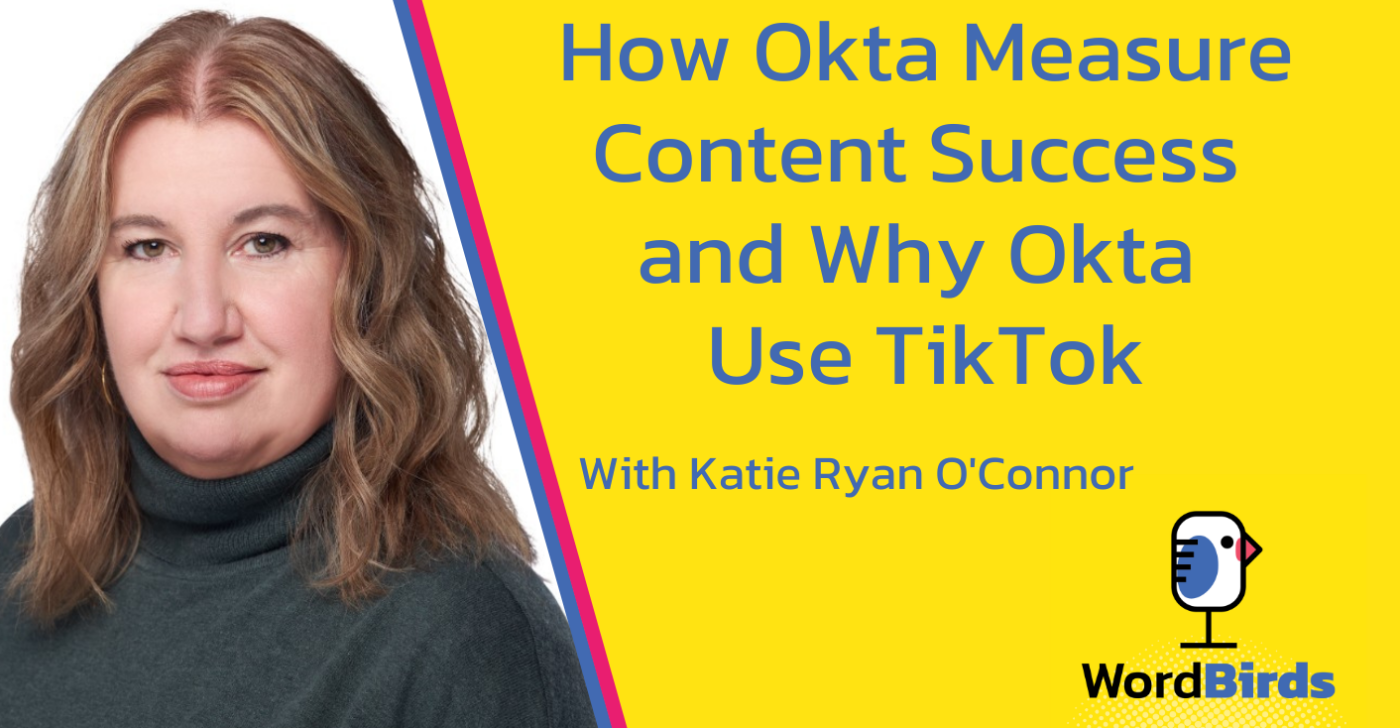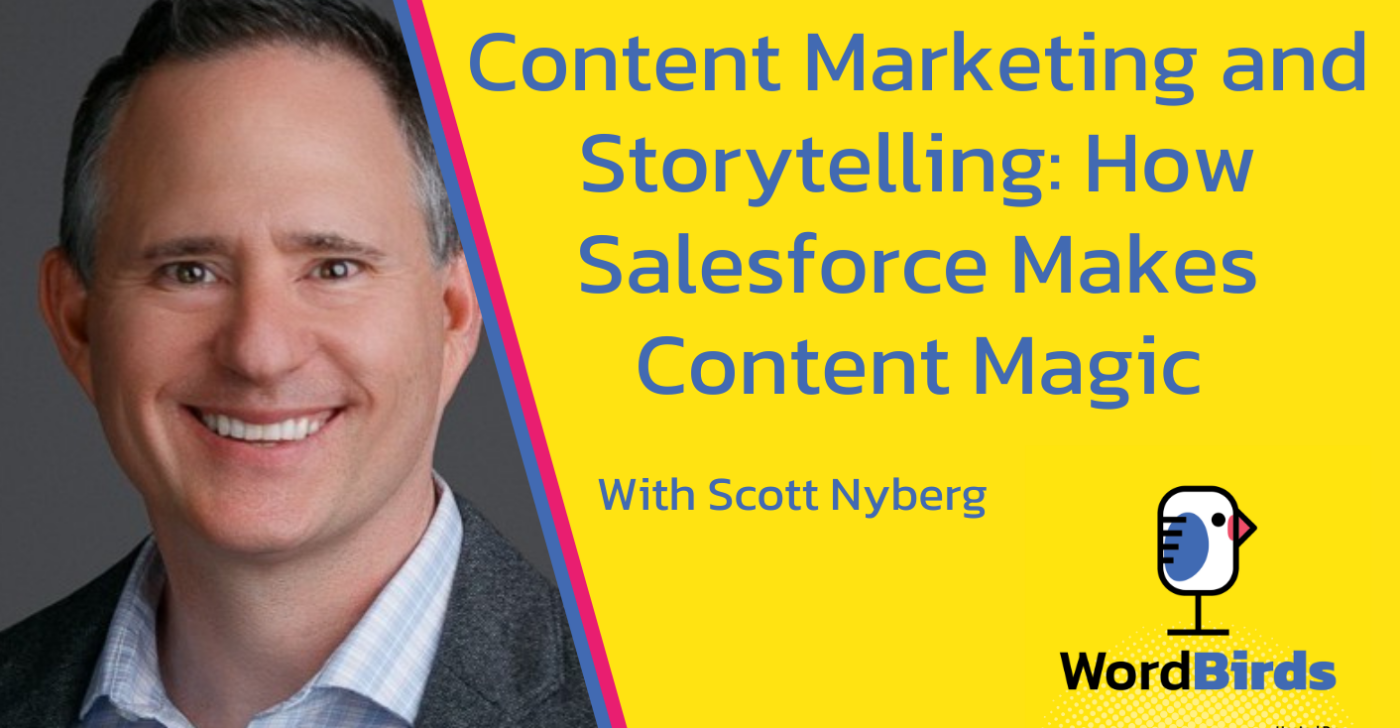Content is king. But what does that really mean? How can you tell if a piece of content is valuable? What makes a piece of content valuable, and how do you measure its value?
In this episode, Samuel Chapman will show you how to attribute the value a piece of content has for your company. As a creative content strategist and communications professional, Samuel will share with us today how to measure the value of your own content.
Tune in now and know when it’s time to invest in new pieces of content — and when it’s time to put that money towards something else.
Watch the episode here
Listen to the podcast here
Read full episode transcript
In this show, we have Sam Chapman. Sam is the Vice President of Content & Communications at Aprimo. We’re going to talk about “growing up in content.” We’re going to talk about content and getting a seat at the table, and we’re going to look at how being more strategic helps drive return on effort, as well as return on investment. Let’s sit back and get some insight from the flock.
Sam, welcome to the show.
Thanks, Chris. I’m happy to be here.
I’m happy to have you here. One of the interesting things about you is that you started out as a journalist, have grown up in content, and have seen yourself evolve from individual journalist to a freelancer, to now a Vice President of Content & Communications. Tell me a little bit about the journey.
It’s a long one. It’s been fun and varied. The interesting part is, starting out as a writer, that’s my trade. Being able to see how that created a root in my career to grow, it’s been rewarding as this has evolved into a profession. I started out with just the written word. As I noticed newspapers shuttering their doors and going all digital, it was time to make a career change. I did some writing for think tanks and travel publications. It spans the gamut.
I found my way into B2B tech and found the challenging nature of the subject matter to be rewarding, much like a journalist finding out how to solve a problem, who your audience is, and how to speak their language to get the information you need from them in order to elicit what you want out of a story in your audience. To be able to continuously do that and continuously make advancements in my career, it’s all to this “growing up in content” that we’ve talked about.
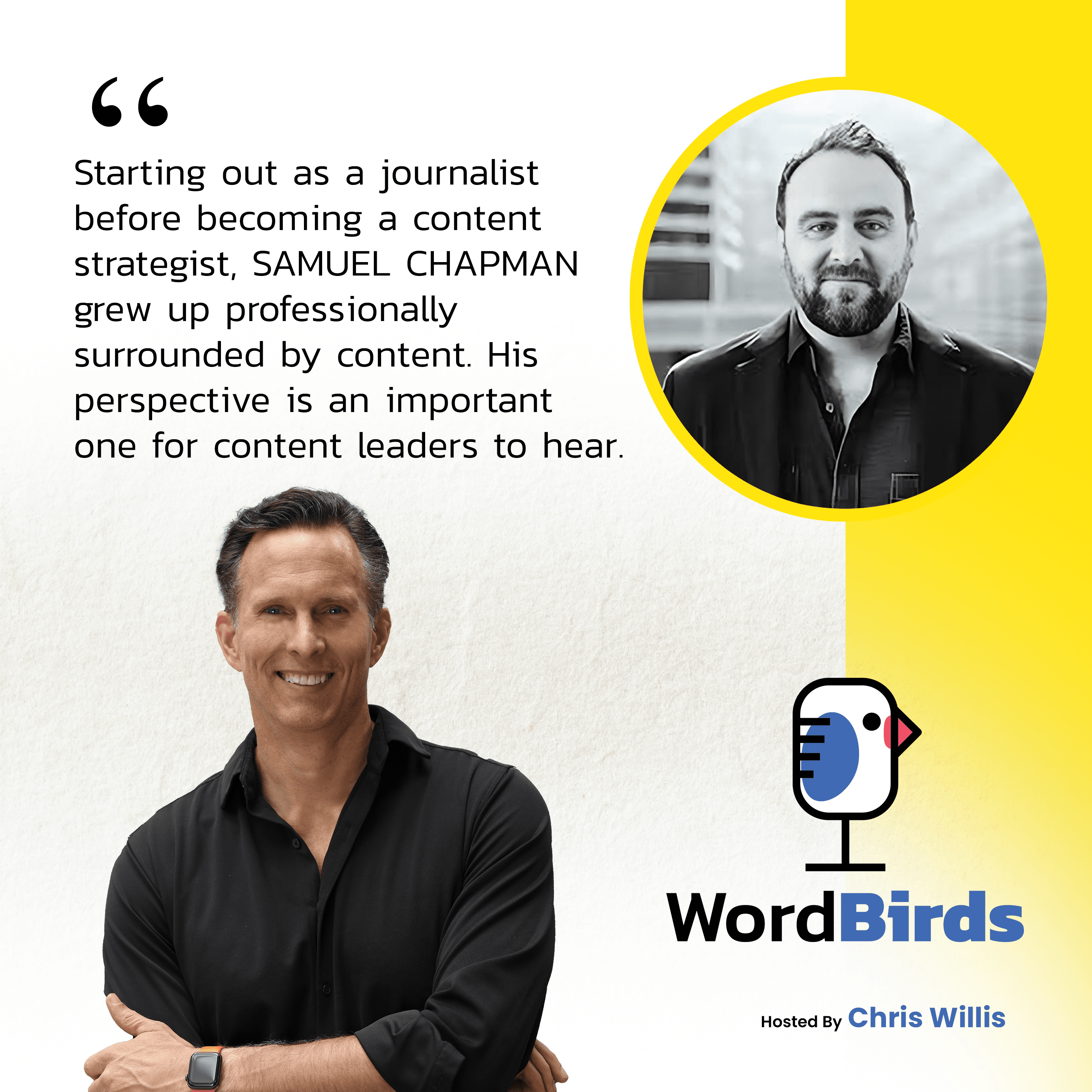
When you look around the market, depending on the company, content has become very central to the business. It’s the touchpoint. Especially over the course of the last several years when people haven’t been able to go out and interface directly with the brands that they do business with, content has become the lead role.
Do you think that content is getting the strategic positioning inside the business and the space at the table it deserves right now?
I would say it’s promising. There’s been amazing progress. In a lot of companies, because content’s so big, they don’t even realize what they’re sitting on or producing. It’s always catch-as-catch-can. When they look back, it’s more and more. The content arm is just seen as the Deli Station ticket, produce it, heads down, jam, grind, you’re never able to look up and see where it’s translating to an objective, key results, and business outcome.
It’s not quite 50/50, but the content and content operations, in particular, still need a seat at the strategy table because there’s a crazy stat out there that 80% of content that gets produced goes unused by sales. That’s enormous potential out of enormous waste.
Content operations have that same mass net effect. It’s building your foundation and content ops house that allows you to get closer to the likes of demand gen. At least in our org, we are lockstep. If you can think of a football on its side, one side, that’s content, and the other side is demand, and it’s a bidirectional arrow. Content feeds demand, demand feeds back into content, and it’s got to be that symbiotic relationship.
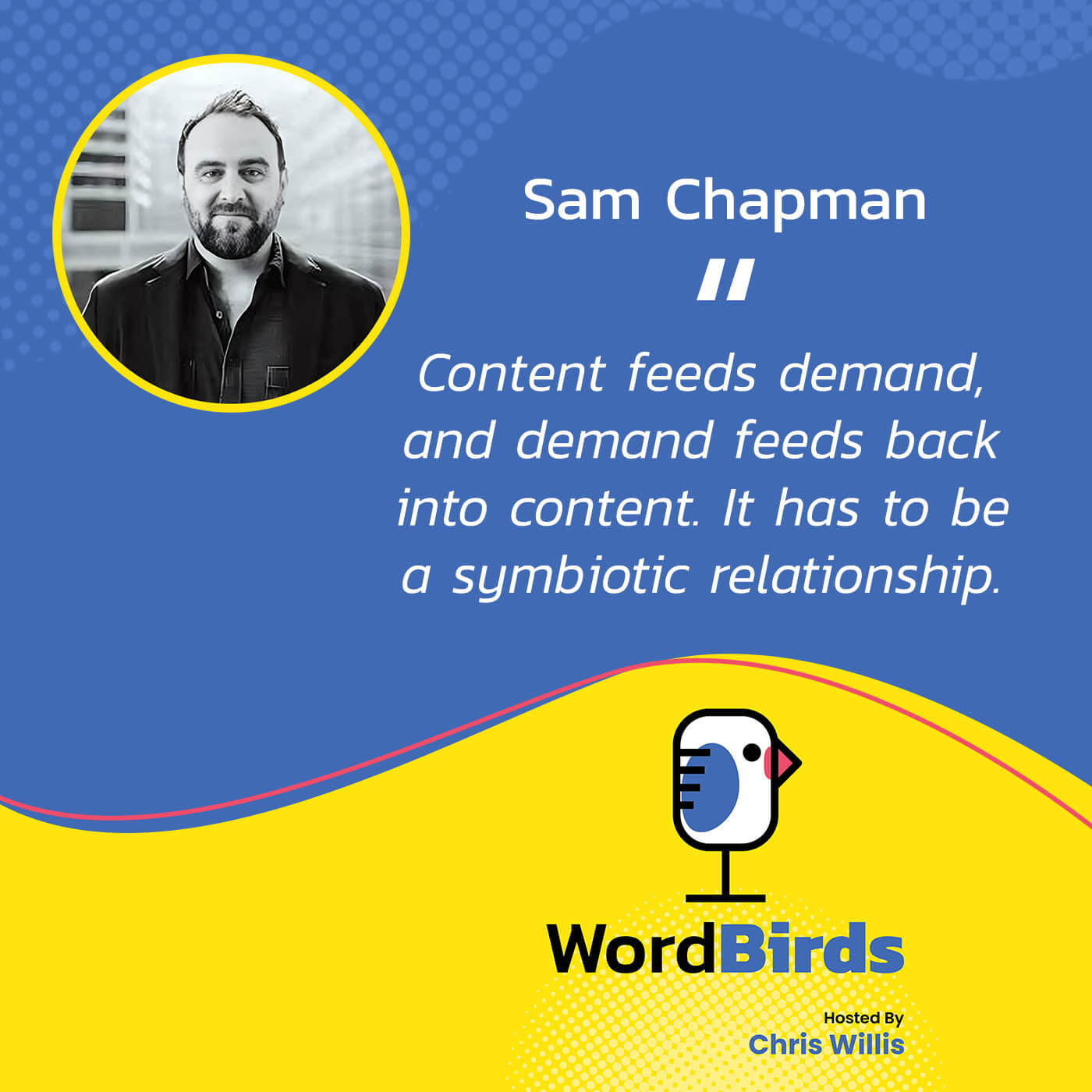
If you can get to that point, the line starts to blur. People start to understand that the lines of business are inextricably connected. That goes back to what we were talking about. If 80% is getting wasted or unused, still, probably half of the organizations out there don’t actually have a formalized content marketing plan. It’s an editorial calendar that changes weekly. There are a lot of processes that go into it rather than words and pretty pictures and videos, and, “They must be having so much fun being creative.”
It does seem fun on TV. The closer that you align with demand gen as well, the easier it is to show the true value of content. You get out of that colors and picture selection part of the business, and you’re part of the engine. I don’t know about how you comp your people, but in my content organization, they’re measured on revenue and pipeline generation because that’s what they’re creating. They’re generating the content that’s going to drive demand. How do we measure the success of content? It’s in pipeline.
I’m fortunate to have found my way to Aprimo, which is a content operations software. I came in as a content professional in software that helps organizations do this. It helps them organize and track down to the smallest block of content that creates an experience at the glass, how that can be reswizzled, repurposed, tied to market segments, or personas based on first-party data, and mobilizing across the content lifecycle. That’s been amazing from a looking retrospective on, “I wish would have done this years ago back in the startup days or whatever it was,” where you’re just building things on the fly.
You’re able to show, specifically to customers, but probably your use internally, a lot of efficiencies through that process. You’re reducing the overall time it takes to get content out and ready for use.
It’s knowing what the purpose is. Like I said, having that strategic team ethos that everything that we produce should matter. We don’t want it to be part of that 80%. It’s having heads up and thinking inside out rather than outside in.
All of this is designed to move the dial in some way. Everything that we create has a point and purpose. How do you ensure that you’re making your timeframes and you’re getting content so that it’s used, but also so that it’s creating the impact that you expect?
As you know, there are other software solutions out there that are made to be easy dashboards for Google Analytics or content tracking. Does it get to the root of it? Are you reporting on anything beyond vanity metrics? What I think is getting smart about how you want to attribute content to value, how it’s driving conversions, and how it’s starting conversations.
There’s not been, in my experience, something out there a solution that exists. There’s a disparate set of tools you can use to build that, but it’s alignment with sales and demand gen to figure out how you want to track and how you want to clean your data flow so you can get meaningful results out of what content moved the needle.
In this progression through the career, I’ve noticed vanity metrics out here, especially if you’re in an agency role, a lot of people in the content world came up from agencies or are currently in one, they’re servicing client after client. What that has driven is client satisfaction. They want to see ROI leads and the value added from campaign X. It’s so easy from an agency’s perspective to put up a dashboard while this killed it. Do you care about impressions? Let’s turn the 180 and look at not the ROI because you don’t get the full picture. Let’s look at the ROE, the Return On Effort.
What went into producing that? How many hours? How many review cycles? How many different people touched it? That’s going to get you a better picture of the success of your efforts. It’s not like ROI goes away. It’s this component to it. Without that, you’re getting a 180-degree view, and missing everything in your periphery.
You have a lot more control over the return on effort than you do over the return on investment because you can build the efficiency however you do it, tools, and internal process, whatever active governance helps you to reduce that cost. It’s just the thing that a lot of businesses aren’t thinking about yet.
The fact that content still lives in silos in most businesses means that there is internal efficiency across those silos. Reusability is a thing in nature, yet it’s not a thing in business necessarily. How are you seeing the role of modular content and reusability in this idea of efficiency?
Modular content and content atomization are not new. In 2017 and 2018, people started talking about it more meaningfully, but there’s a technological element. Otherwise, it does not scale because you’re burning a lot of hours to manage it. With advances and things like metadata, systems can help you organize, automate, and help teams learn. If you’re in multiple regions, is it a trunk? Is it a boot? Is it a jumper? Is it a sweatshirt? All of these little micro efficiencies can be gained through modular content.
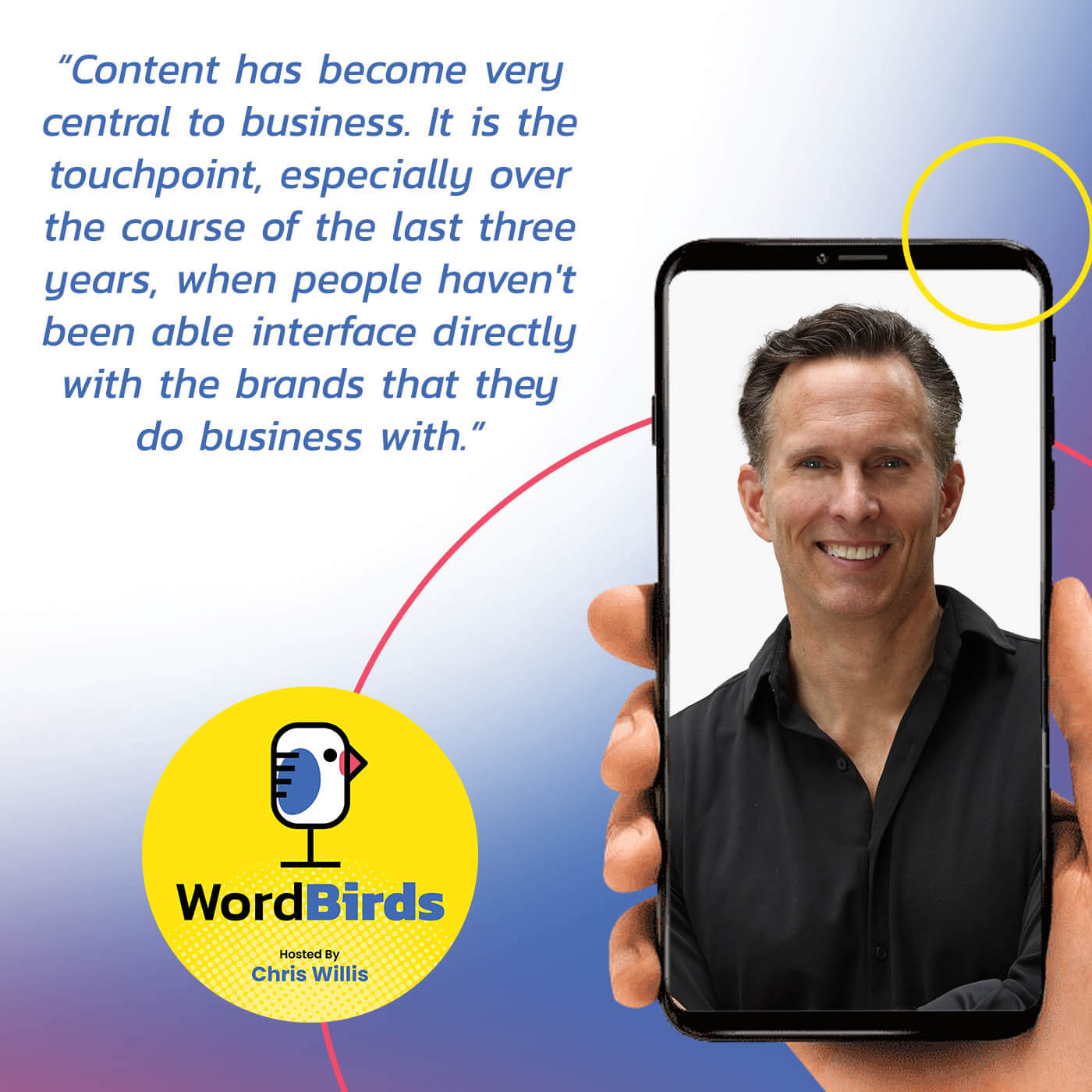
You’re familiar with Agile where instead of a waterfall, it’s like, “Let’s do a bunch of stuff, then we’ll review it at the end, and back to square one.” It supports an Agile methodology because you’re doing a tiered approach. Thinking about it in its smallest, usable module component, we call it a content block, that goes into a set, which is the next tier. At the glass experience, the landing page, and the ad you get served up on Instagram or whatever, that is the content experience.
All of that properly archived with metadata can be mobilized across different brands, different geos, target segments, and personas based on first-party data preferably to get actual results. That’s the power of modular content. Personalization has been this big push. I think personalization will meet out in the next few years where it’s just like, “Let’s be the best we can be as a brand to appeal to the most people rather than a segment of one.” Personal modular content can help you get to that scale without breaking your team’s spirit because that’s another aspect of this. It’s the burnout.
We got a huge audience of varying personas. “How do I scale this operation so that I can support all of them?” Meaning the other challenges with the changes in regulations in Europe with GDPR, with Apple, and Samsung, I believe, obfuscating the IP address and personalization.
The provocative statement of the day is, “Personalization might be dead.” How do you create a personal experience with your audiences? In a way, it’s through more directive content designed specifically for those audiences, not for Sam. It’s for people like Sam. We know a lot about you, and we create that content. It’s a scalability challenge but a necessary challenge in light of the current technology challenges that we have. I just said challenge a lot.
You have a take on content, this 360 view. I like that. We talk about efficiency. One of the big values of my platform is that we can help you save time, energy, and money specifically on the creation of your content. We walk into these big enterprises with millions of pages of content and say, “We’re can help you save money.” They say, “Show me where on my budget I’m spending money on content.” Unless you’re outsourcing everything to agencies, you got me.
Content is a byproduct of what people do when they come to work. It doesn’t show up as a purchase. It’s something that we just do. Stepping back and helping a business to understand that you have this asset, this pile of content that you’ve created, A) Your asset’s expensive, B) If you knew you had an expensive asset, would you only be maintaining 10% of it a year, or would you be maintaining much more of that because it’s an expensive, valuable asset? It’s super interesting that, from the position of your business, a big part of what you can assist with is making that content A) Showing the value of it and B) Making it more valuable for longer.
That’s the whole reuse component of modular. It’s where you start to see ROI. How many times can you chop this up and use it again and again? Let’s take a quarter off from producing new content, take a breath, and work with what all we’ve got. We try to do that. There are fat and lean periods of content blooms. You’ve got to figure out how to slow down and repurpose and reuse. It’s a mindset of commoditizing content and the people that make it, rather than seeing it as the very real business driver that it is. It’s a journey.
There is a prevailing mindset of commoditizing content rather than seeing it as the very real business driver that it is. Click To TweetYou talked about reactionary and being proactive. When I think of what content 360 means, you start at level 1 of being reactive. You’re just trying to keep up. You’re taking requests, any requests. Does this scan to corporate strategy? Is it aligned with business objectives? Is it informed by data? You then work on those. You get some more of a responsive state. You’re getting steady. You’ve got content ops in place. You’ve got a single source of truth somewhere. Not quite 360 degrees, but you’re starting to get predictive, and this is where tech comes in.
There’re some AI tools out there that do not take place of humans. For all your copywriters out there, I’m not in the camp of we are the robots, but automation, intelligent workflows, and things like that, that can take the work out of work. Like I said, the burnout thing is real. We’ve got the whole quiet quitting thing going on. Creatives, the people that manage words, creatives, and produce the video need that. You need that couch time. You need that big think time to relax and bubble up to the ideas. I forget what that book by David Lynch is on creativity, but there is some great stuff in there.
Finally, the full view of content 360 is that prescription prescriptive nature where you can start bringing all that data back from campaigns or the tools that you are using to meet customers where they already are, all your different channels. You bring that back, and you inform it back into the content lifecycle, back into the operational aspect. That rounds out the content 360 journey.
We had one of our customers speak at our sales kickoff several months back, which seems like a million years ago. I guess it almost was. I had not spoken to this person. Somebody asked the question of, “How does your company measure the value and success of your content?” She said, “Revenue.” We make more money if our content is good. There’s a huge travel consolidation site in revenue. We need to drill into that because I want to understand how you get to that. Everything that we’re doing is about trying to drive to conversion of some sort. That’s the purpose of all of this, but how does your company look at that?
They have a piece of content they’ve built, call it a webpage. They’re spending money to create all kinds of content to support that page, whether it’s ads, billboards, or whatever they’re building to push out into the world. They’re also spending a truckload of money on the promotion of that, so Google ads, retargeting, and everything that comes along with that, like radio ads, to drive people to this one webpage. They’re also doing SEO. If they’re getting 35 million impressions a month and 500,000 clicks on that a month, they’re spending tangible money on this to get these people to this one page.
Here’s the interesting thing. When we ran an analysis on the page, it had 350 issues on it that could confuse or drive somebody away from the page. You’re spending an awful lot of money to have potential conversion blockers on your page, just this one page. If we can remove those so that more people convert on that page, you are closer to and directly at revenue. If we can now do that, it scales across the entire site. What does that do to a business? It does 2 things. 1) It helps this content organization prove the value of what they’re doing. 2) It shows the global value of content to a huge enterprise.
This is the business that you’re in. If every page converts even 1% better than it is now, you’re a different company with a different valuation based on the better creation of your content. How do you even start to have that conversation with a CEO of a Fortune 1000 company? We have this content solution, and we can change the complexion of your business. That’s a hard one to have, but it’s very real.
This is a question couched in a statement. I wonder if you’re starting to see what we are starting to see, which is content leadership moving above those silos, getting above technical documentation, support content, educational content, and marketing content to have a real seat at the top table, at a C-level, owning the overall customer experience of content. It’s rare, but it’s starting to happen. Are you seeing that at all?
I’m seeing it in just observations of leadership roles that have come up through content, that Salesforce and other major players where the content marketing function has evolved into this leadership role of, “This can’t happen.” These roles as leadership on content are important to explain the change management nature of this. You’ve got to convince someone to effectively make a paradigm shift and think completely differently about what content is. I go back to Thomas Kuhn who was a philosopher of science where all breakthroughs are break-withs on the old way of thinking.
I’ll be honest. There are a lot of times even with things like modular content or content operations, first, they hear big investment to do this because they’re thinking of, “I’m spending more money to produce more content.” The second is, “How are we going to do this at a battleship-size organization? How do we turn the battleship?” Change management, being able to speak to that to explain with real numbers, but also how this upstream can affect the downstream, these roles are critical to that because no one knows it better.
That’s where the entire thing is coming from. We’ve covered a lot of ground from the beginning of the creation of a content person to the measurement of the value of content globally to the content rising to the C-level. If somebody wants to continue this conversation with you or learn more about Aprimo, how would they find you?
Pop in Aprimo and me on LinkedIn. That’s probably the best way. I’m happy to continue the conversation there. It’s a passion. Like I said, I’m entirely fortunate to have come up this way and to see it evolve alongside my career trajectory.
Sam, thanks for being on the show. This has been great.
I appreciate it, Chris. Thanks.
Important Links
- Aprimo
- Aprimo on LinkedIn
- LinkedIn – Samuel Chapman
- WordBirds – LinkedIn
- WordBirds – Home page
About Samuel Chapman

Samuel Chapman is a content strategist, brand builder, and storyteller. He is currently VP of Content & Communications at Aprimo. Sam has spent the last decade building data-driven content operations programs for hyper-growth startup, mid-market, and enterprise B2B tech organizations to help them translate their mission, vision, and values into meaningful brand narratives and content experiences. Connect with him here.

